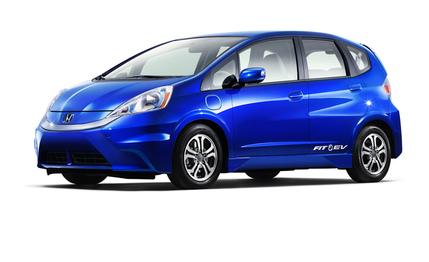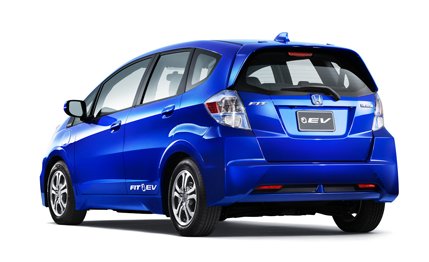 First Drive Review
First Drive Review
A month ago, we saw the debut of the production Honda Fit EV at the L.A. auto show. We’ve now had the chance to get behind the wheel during Honda’s pre-Tokyo-show product event at the Twin Ring Motegi race facility, albeit in a very limited fashion.
To review the specs of the Fit, its electric motor is derived from the one installed in Honda’s FCX Clarity fuel-cell EV and pumps out 123 hp and 189 lb-ft of torque. The motor is fed by a 20-kWh, air-cooled lithium-ion battery pack made by Toshiba. Range on the unadjusted, highly optimistic LA4 driving loop is 123 miles, but the adjusted EPA range on the window sticker should be closer to 76 miles. That’s based on a consumption figure of 29 kWh per 100 miles; the Nissan Leaf uses slightly more energy at 34 kWh per 100 miles.
The battery pack is mounted underneath the car. It’s a decision that resulted in a floor that’s three inches higher than the conventional model’s, but the Fit’s cathedral ceiling meant that we didn’t notice the reduced headroom. The trick Magic Seat, whereby the seat bottom can flip forward, also is lost in the switch to electrification, although the rear seatbacks will still be able to fold flat and allow for various other configurations for increased utility.

Other interior modifications are more noticeable, such as the revised instrument cluster. In the EV, the rightmost pod houses a large battery-capacity gauge and two gauges that indicate accessory draw: one for the HVAC system and one marked “others” for everything else. In the middle is a digital speedometer with a smaller digital range indicator underneath; below that is a familiar Honda multifunction display. The left pod shows instantaneous energy flow, whether you’re using power or recharging. The Fit EV has three drive modes: econ, normal, and sport. In sport mode, the car’s electric motor unleashes more of its fury, and the availability of that anger is shown in the instrument cluster as an extended band on the power meter.
As mentioned, our preview drive was short—only a few miles around the grounds of Twin Ring Motegi. Based on our limited exposure, though, the Fit EV shows potential. After all, the basic car has won multiple 10Best awards. The EV version mostly feels like the standard Fit, although the heavy battery pack—Honda won’t tell us exactly how much it weighs—imparts a bit of wobble to the handling. As in the Leaf, the steering lacks feel, but the Fit’s setup has much better weight to it, which helps accuracy. We didn’t reach the 90-mph top speed, but the motor continues to pull strongly even at higher velocities, which is where EVs such as the Leaf tend to fall off. Normal and econ driving modes are essentially the same; the latter simply dulls accelerator response. Sport mode offers the most aggressive pedal setting, and the extra power is definitely noticeable.
As already announced, Fit EV production will be limited to 1100 cars available only in select U.S. markets. All will be leased at an estimated cost of $399 per month starting next summer. That’s a shame, because this Fit is good enough to satisfy a larger audience.